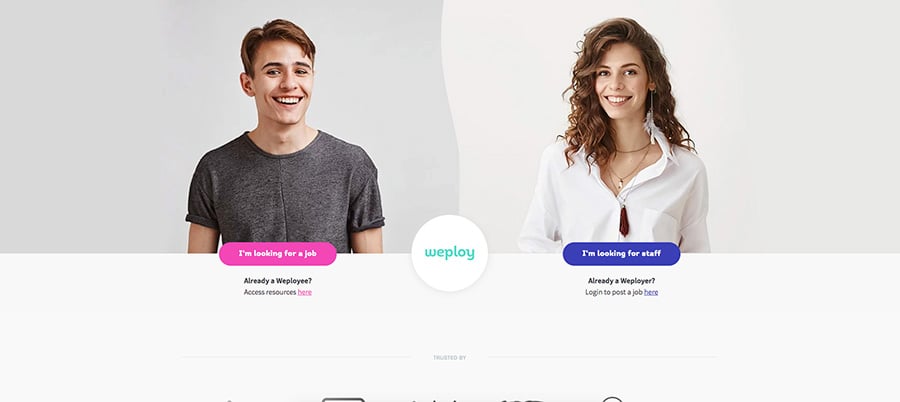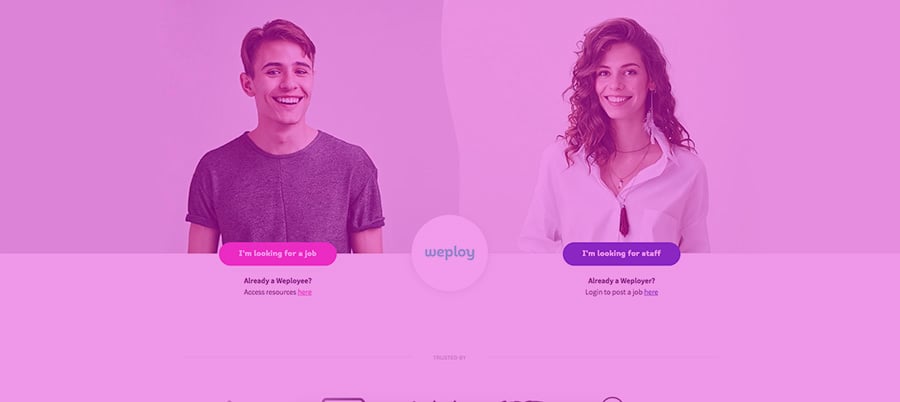When people interact with one another, they follow the unspoken guidelines for social interaction. These norms of what is and isn't acceptable applies to all of our encounters, whether online or offline. The question every business has to ask: if your blog is a conversation, would your visitors be happy to stick around and listen, or would they look for an excuse to leave? This is where your content writing team can really prove their worth.
A "real life" conversation example
Last Saturday morning, you dropped the kids off at their cricket match and happened to see Sue Clark unpacking some water bottles to restock the canteen fridge. You wave a hello and make your way over to have a quick chat and ask "How's your morning been?". You would expect Sue to say hello back and tell you about her morning to which you might even offer to help her with unloading the water bottles. You wouldn't expect to be ignored nor would you expect Sue Clark to reply with a nonsensical "I like the colour purple".
Even in the most basic conversations, social guidelines are followed. Without them, awkwardness and confusion quickly ensues. The same rules apply for online interactions.
Online interactions have the same rules
Just as we have expectations about how a face-to-face conversation might play out, we also have assumptions about:
- how a website will function
- the kind of content we will find on that site
- how we plan to use that information once we have left the page
If we visit a website that isn't responsive on a mobile device, we might feel like we're excluded from the conversation. If a page doesn't load or we click a link that goes nowhere, it's like we're being bluntly ignored. If an ad pops up in front of the content we want to read (or runs noisily in the background), it feels like someone's invading our personal space.
We feel frustrated, annoyed and ready to walk away. And no one likes that feeling!
With too many competing elements and a lack of focus, your website won't be up for the important task of converting online visitors into leads, and onto customers. However, things don't have to stay that way. Your blog doesn't have to be the loner at a party that no one wants to talk to.
Consider these 5 simple steps for conversation starting,
conversion driving blogging. Great online conversations nurture long term relationships and drive revenue. A win/win for everyone!
1. Make your site responsive
The very first thing that you should do to stop your site and your blog from breaking any social rules is to make it responsive.
Why is this important? Because although you spend a good part of the day in front of your desktop screen in the office, it's very likely that your audience does not.
"For a third of Australians, accessing mobile content is the first thing they do in the morning and the last thing they do at night." - AdNews
People are increasingly likely to catch up on blogs, media and unread emails in the time that they have free away from the desktop. Sometimes it'll be on the commute to and from work, other times it'll be while cooking dinner or in the quiet moments once the kids are in bed.
If you haven't a responsive site in place, those annoying and frustrated emotions we talked about earlier? Your visitors will experience those feelings on your site and leave.
Note: Since April 2015, Google has begun "boosting the ranking of mobile-friendly pages on mobile search results". Mobile friendly-ness is even more important, not only for making the right (online) impression, but also for maximising your digital presence.
2. Write like you, not an academic professor
We can all tell, within seconds, if a blog post is going to bore us to tears. The feeling of disappointment is even worse when the topic is promising, yet the complicated "dictionary warble" lets us down.
When you're
writing for your blog or your website, regardless of whether you're B2B or B2C, don't try to jam-pack your blog post with complicated words and unnecessary fluff. Be straight with your readers and say it how it is. Customers and new visitors alike will appreciate your content more for clearly answering the questions they have. There's no place for jargon in your part of internet town!
Disclaimer: There are, of course, exceptions to every rule. In this case, it may be different for whitepapers and research reports. The use of slightly more complicated, complex and jargon-heavy text would be appropriate, since your reader is probably expecting it. These text heavy resources often step up the formality and contain a lot of content.
3. Be less needy and more giving
Just because someone has come to your site it doesn't mean that you can ask them highly personal information once they've landed on a page. I get this all the time (for some reason, on a lot of women-focused communities like Mamamia) when I first click through and up pops a box requesting for me to enter my email so that I can stay updated on all the latest news. Sorry, but no.
The only time that I am willing to give away my information is in two situations.
When I want to download something
I'm happy to give my name and email address because I expect that's where the download will go to. Likewise, if I return to the site and download something again, I'm willing to provide more detailed information such as my job position and what company I work. I've already established that the site as trustworthy and valuable to me.
You can begin implementing these techniques and drive more conversions, using tools such as smart forms.
When I decide for myself that I would like to subscribe to the newsletter or news stream
If I haven't decided for myself, then it's unlikely a pop up ad will convince me. Once someone takes it upon themselves to subscribe to your blog or email updates, you can be more confident that they are interested in what you have to say (and offer). This also demonstrates they're a much more qualified lead than someone who's just signed up to get the ads out of the way.

4. Respond and always remember - we're all human
Respond - it's the stage often referred to as the final part, yet it really is an ongoing process.
No matter what platform people are using to engage with your business, the aim is always to respond and engage. Whether it's on social networks, via the blog comments or using email, prompt and human replies are always appreciated.
It can be as simple as a "Thanks for sharing!" or a 'Like' on a comment. The effort you put into responding (like you would a normal conversation) indicates how invested you are in your customer's situation and challenges.
5. Discover and answer the questions people are actually asking
It's a big time waster to start publishing content if you have no idea what people want you to say in the first place. Investigating search volume for different questions is a great way to see what people care about. Position your blog as an answer to your customer's solution, via extensive
keyword research.
Where to now?
First impressions matter a lot. Messing up the crucial first encounters with your potential customers online is a defeat for everyone. You could lose out on customers, and your potential customers lose out on the solution to their unique challenges.
On the other hand, making the right impression isn't an impossible feat. Now you've got these 5 simple wins for your website in hand, try mapping out your blog planning in this hand Editorial Calendar and nail your blogs focus. Brilliant, conversion driving content is on your business' horizon!









